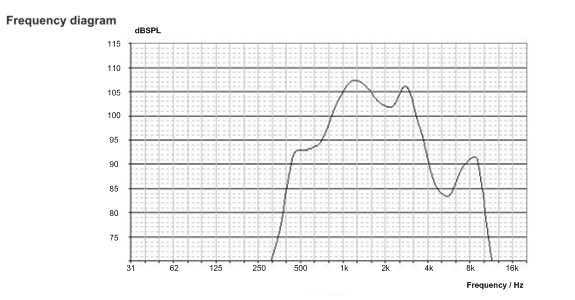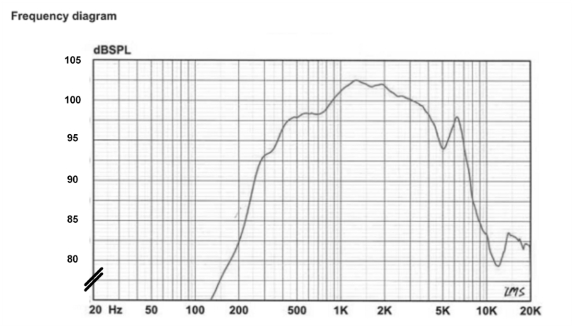History
Not so many years ago speech intelligibility was synonymous with audibility. And audibility is nothing else than good sound coverage which means: ‘Speakers must be 10 to 15 dB louder than the ambient noise’…
…but that is only half the truth.
With the following article we want to show you what can influence speech intelligibility and what are the main factors that could prevent clear speech transmission by a PAGA system.
Distance
In physical terms, the sound pressure level (SPL) decreases by 6 dB when the distance is doubled. This means a loudspeaker provides 100 dB at 1 meter distance, 94 dB at 2 meters, 88 dB at 4 meters and so on. This so-called inverse distance law 1/r is only valid within a free field and with point-shaped sound sources.
In reality you will get diffuse reflections (scattering) from buildings and other structures, absorption from surfaces and other obstacles that disturb and affect sound propagation.
Ambient Noise, Signal to Noise and Masking Effects
Imagine you have an industrial plant with many machines and pumps and other sound sources that produce a lot of unwanted noise, let’s say 90 dB(A) in broadband.
Now you can say: I do not care – my loudspeakers can produce a SPL of 125 dB / 1 meter.
But you must consider that the speech intelligibility decreases if our ear receives sound levels above 85 – 90 dB.
This is a relatively new finding which must be considered in the STI (Speech Transmission Index) measurement and analysis. It is part of the so-called masking effect which considers some further psychoacoustic effects.
So be careful with loudspeaker SPLs which clearly exceed 90 dB – that might result in bad speech intelligibility.
Frequency and Loudspeaker Data
Most loudspeaker manufacturers state the maximum SPL at 1 kHz, but the most relevant and ’used’ frequency in human speech is at 700 Hz and speech is a mixture of different frequencies and various modulations.
So it makes no sense to choose loudspeakers that are ‘very loud’ but have a frequency response like a triangle.
Please compare the following frequency plots of two different loudspeakers from different manufacturers.
Loudspeaker A is stated with 108 dB / 1 m; Loudspeaker B with 103 dB / 1 m.
Loudspeaker A:
Loudspeaker B:
If you select loudspeaker A only knowing the difference of 108 dB vs. 103 dB without comparing the frequency diagrams, you will be possibly disappointed when hearing this loudspeaker in the field.
Frequency Spacing
The more frequency spacing is between the speech or alarm tone and the noise source frequency, the better is the intelligibility and audibility of that information signal. This is another psychoacoustic effect that you can use in your favour.
Often a female speaker is better than a male speaker due to the above mentioned fact.
Distortion
That is a major factor that can completely disturb the speech intelligibility while the audibility is good.
Where are the distortion sources?
From microphone to amplifiers to loudspeakers – every device in the audio chain could cause distortion. No single device in this chain should be overdriven or operated beyond its specification.
Standards
In the last few years, different standards such as EN60849, EN54-16 and IEC 60268-16 were issued which describe and require measurements, calculations and proof of speech intelligibility.
For this purpose and for fast response, the Speech Transmission Index STI was introduced. This index can be calculated with different audio calculation tools and can be measured with modern audio measurement devices.
These standards and tools give us the possibility to develop and install PAGA systems with a highly intelligible speech transfer.
But it is also always a task and challenge to get rid of the barriers that industrial plants put in the way.
As a result we design PAGA and communication systems which can clearly transmit warnings and information to working staff and people – and save lives in emergency situations.


One thought to “Speech intelligibility and current standards with PAGA systems”
Interesting to read thru’. I am familiar with Industronics products having worked with the same on numerous projects – Very flexible and less complicated system but with all the features required by Client. I also do PAGA coverage studies using SOUNDPLAN for large oil and gas facilities. while creating the loudspeaker library, I use all values of the loudspeaker emission frequency spectrum so that the performance of the loudspeaker at all frequencies are considered in the SNR calculation.